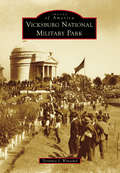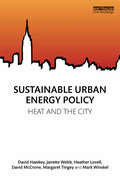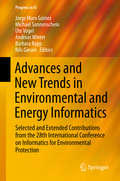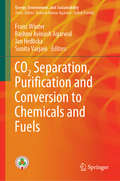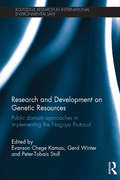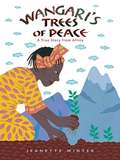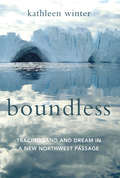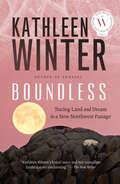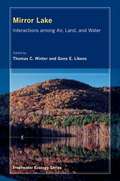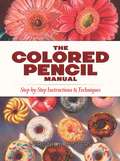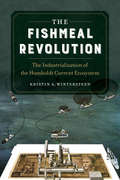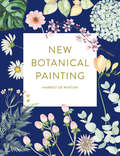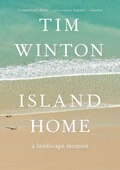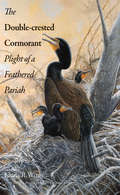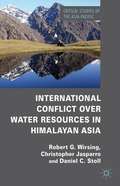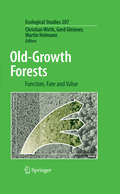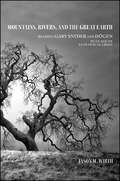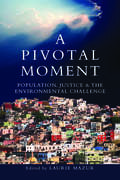- Table View
- List View
Vicksburg National Military Park
by Terrence J. WinschelVicksburg National Military Park was established by Congress to "commemorate the campaign, siege and defense of Vicksburg," which many consider the most decisive campaign of the Civil War. The battlefield at Vicksburg is one of the largest and most heavily visited of the nation's historic sites. Beginning with the efforts of Union and Confederate veterans to gain Congressional action to establish the park, and continuing through veterans' work in land acquisition, road and bridge construction, and the dedication of the magnificent memorials and monuments that dot the landscape, Images of America: Vicksburg National Military Park features stunning photographs of the efforts and events that have made Vicksburg the "art park of the world." Also included are images of veterans' reunions and the work of the Civilian Conservation Corps, as well as a history of Vicksburg National Cemetery, where the remains of 17,000 Union soldiers and sailors are enshrined.
Sustainable Urban Energy Policy: Heat and the city (Routledge Studies in Energy Policy)
by Mark Winskel Janette Webb David McCrone David Hawkey Heather Lovell Margaret TingeyMinimising the most severe risks of climate change means ending societal dependence on fossil fuels, and radically improving the efficiency with which we use all energy sources. Such deliberate transformative change is, however, without precedent. Sustainable Urban Energy Policy debates the major public issue of developing a sustainable, clean and affordable energy system by adopting a distinctive focus on heating in cities. In this way, the book constructs an original account of clean energy policy, politics and provision, grounded in new empirical data derived from case studies of urban and multi-level governance of sustainable heat and energy saving in the UK and Europe. Offering an original conceptual framework, this study builds on socio-technical studies, economic and urban sociology, human geography, applied economics and policy studies in order to understand energy governance and systemic change in energy provisions. This book is a valuable resource for students and academics in the areas of Science and Technology Studies, Sociology, Geography (Urban Studies) and Political Economy as well as energy policy makers, social housing providers and energy practitioners.
Bee Time: Lessons from the Hive
by Mark L. WinstonBeing among bees is a full-body experience, Mark Winston writes. Bee Time presents his reflections on three decades spent studying these remarkable creatures, and on the lessons they can teach about how humans might better interact with one another and the natural world, from the boardroom to urban design to agricultural ecosystems.
Advances and New Trends in Environmental and Energy Informatics: Selected and Extended Contributions from the 28th International Conference on Informatics for Environmental Protection (Progress in IS)
by Andreas Winter Jorge Marx Gomez Michael Sonnenschein Ute Vogel Barbara Rapp Nils GiesenThis book presents the latest findings and ongoing research in the field of green information systems and green information and communication technology (ICT). It provides insights into a whole range of cross-cutting topics in ICT and environmental sciences as well as showcases how information and communication technologies allow environmental and energy efficiency issues to be handled effectively. The papers presented in this book are a selection of extended and improved contributions to the 28th International Conference on Informatics for Environmental Protection dedicated to ICT for energy efficiency. This book is essential and particularly worth reading for those who already gained basic knowledge and want to deepen and extend their expertise in the subjects mentioned above.
CO2 Separation, Purification and Conversion to Chemicals and Fuels
by Franz Winter Rashmi Avinash Agarwal Jan Hrdlicka Sunita VarjaniThis book presents the recent research on the separation, purification and downstream utilization of CO2 and other flue gases. Chapters include a detailed discussion on the purification and further conversion of CO2 to commodity chemicals and fuels. With contributions from renowned researchers in the field, the book focuses on the current challenges of catalytic high-pressure chemical conversion and biochemical conversion into high-value products. This book is of interest to researchers, professionals, and students working on carbon capture and sequestration, and is a valuable resource for policy makers and government agents working on guidelines and frameworks for carbon capture and reuse.
Multilevel Governance of Global Environmental Change
by Gerd WinterOriginally published in 2006, this collection is the outcome of an interdisciplinary research project involving scholars in the fields of international and comparative environmental law, the sociology and politics of global governance, and the scientific study of global climate change. Earth system analysis as developed by the natural sciences is transferred to the analysis of institutions of global environmental change. Rather than one overarching supranational organisation, a system of 'multilevel' institutions is advocated. The book examines the proper role of industrial self-regulation, of horizontal transfer of national policies, of regional integration, and of improved coordination between international environmental organisations, as well as basic principles for sustainable use of resources. Addressing both academics and politicians, this book will stimulate the debate about the means of improving global governance.
Research and Development on Genetic Resources: Public Domain Approaches in Implementing the Nagoya Protocol (Routledge Research in International Environmental Law)
by Gerd Winter Peter-Tobias Stoll Evanson Chege KamauNational implementation of the Convention on Biological Diversity (CBD) provisions has yielded enough challenges for providers and users of genetic resources and associated traditional knowledge alike. The Nagoya Protocal brings novel ideas for resolving the challenges plaguing the Access and Benefit-Sharing (ABS) process in general and non-commercial research in particular. This is one of the first books to address research cooperation and facilitated access for non-commercial biodiversity research. It uniquely offers concrete and practicable solutions based on experiences of researchers and administrative officials with ABS, and on the interpretation of the Nagoya Protocol on how free and lively taxonomic research can be ensured while at the same time observing obligations of obtaining prior informed consent and sharing of benefits. This book will be useful to students of International Environmental Law, International Biodiversity Law, Intellectual Property Law, Climate Law and Law of Indigenous Populations. With foreword from Executive Secretary CBD, Braulio Ferreira de Souza Dias.
Wangari's Trees of Peace: A True Story from Africa
by Jeanette WinterAs a young girl growing up in Kenya, Wangari was surrounded by trees. But years later when she returns home, she is shocked to see whole forests being cut down, and she knows that soon all the trees will be destroyed. So Wangari decides to do something—and starts by planting nine seedlings in her own backyard. And as they grow, so do her plans. . . . This true story of Wangari Maathai, environmentalist and winner of the Nobel Peace Prize, is a shining example of how one woman’s passion, vision, and determination inspired great change. Includes an author’s note.
Boundless: Tracing Land and Dream in a New Northwest Passage
by Kathleen WinterIn 2010, bestselling author Kathleen Winter (Annabel) embarked on a journey across the storied Northwest Passage, among marine scientists, historians, archaeologists, anthropologists, and curious passengers. <P><P>From Greenland to Baffin Island and all along the passage, Winter bears witness to the new math of the North-where polar bears mates with grizzlies, creating a new hybrid species; where the earth is on the cusp of yielding so much buried treasure that five nations stand poised to claim sovereignty of the land; and where the local Inuit population struggles to navigate the tension between taking part in the new global economy and defending their traditional way of life.Throughout Winter's journey, she learns from fellow passengers such as Aaju Peter and Bernadette Dean, who teach her about Inuit society (both past and present). She bonds with Nathan Rogers, son of the late Canadian icon Stan Rogers, who died in a plane crash when Nathan was just a young boy. Nathan's quest is to take the route his father never traveled, expect in his beloved song "The Northwest Passage," which he performs both as anthem and lament at sea. And she guides readers through her own personal odyssey, emigrating from England to Canada as a child and discovering both what was lot and what was gained as a result of that journey.In breathtaking prose charged with vivid descriptions of the land and its people, Kathleen Winter's Boundless is a haunting and powerful homage to the ever-evolving and magnetic power of the North.
Boundless: Tracing Land and Dream in a New Northwest Passage
by Kathleen WinterThe long-awaited follow up to Annabel and Kathleen Winter’s first work of narrative nonfiction.In 2010, bestselling author Kathleen Winter took a journey across the storied Northwest Passage, among marine scientists, historians, archaeologists, anthropologists, and curious passengers. From Greenland to Baffin Island and all along the passage, Winter bears witness to the new math of the melting North — where polar bears mate with grizzlies, creating a new hybrid species; where the earth is on the cusp of yielding so much buried treasure that five nations stand poised to claim sovereignty of the land; and where the local Inuit population struggles to navigate the tension between taking part in the new global economy and defending their traditional way of life.Throughout the journey she also learns from fellow passengers Aaju Peter and Bernadette Dean, who teach her about Inuit society, past and present. She bonds with Nathan Rogers, son of the late Canadian icon Stan Rogers, who died in a plane crash when Nathan was nearly four years old. Nathan’s quest is to take the route his father never travelled, except in his beloved song “The Northwest Passage,” which he performs both as anthem and lament at sea. And she guides us through her own personal odyssey, emigrating from England to Canada as a child and discovering both what was lost and what was gained as a result of that journey.In breathtaking prose charged with vivid descriptions of the land and its people, Kathleen Winter’s Boundless is a haunting and powerful story, and a homage to the ever-evolving and magnetic power of the North.
Mirror Lake: Interactions Among Air, Land, and Water
by Thomas C. Winter Gene E. LikensLakes change constantly in response to their surrounding landscape, and their airshed. Mirror Lake, located in the White Mountains of New Hampshire, has been carefully researched since the 1960s. This book, edited by Thomas C. Winter and Gene E. Likens, summarizes and interprets the extensive data collected on this lake and its watershed from 1981 to 2000, a period during which the lake was affected by a variety of climate conditions as well as significant human activity. The findings documented also identify the panoply of chemicals influenced by limnological processes and include percentages of inflow sources, percentages of water loss from seepage, surface outflow, and evaporation, and the effect of water flow on the lake nutrients.
Plants that Trick and Trap (Fountas & Pinnell LLI Red #Level L)
by Julie WinterbottomHow do greenthings avoid mean things? Plants have remarkable ways of defending themselves. From dazzling disguises to powerful poisons, they could earn a black belt in self-defense!
The Colored Pencil Manual: Step-by-Step Instructions and Techniques (Dover Art Instruction Ser.)
by Veronica WintersExperienced artists looking to master a new medium will relish this comprehensive guide to using colored pencils by Veronica Winters, author of How to Color Like an Artist. Step-by-step projects with photos and directions illustrate the many details that bring a simple composition to brilliant life, offering readers a comprehensive overview of colored pencil techniques.A brief introduction covers necessary materials and explains the book's overall approach, and subsequent chapters address specific techniques. Each lesson features color swatches that match the colors of different pencil brands, as well as the type of drawing paper and other supplies that will work best for the artwork. Winters expertly covers such techniques as shading and blending and discusses a wealth of other topics, including the importance of light, composition, drawing solid objects in 3-D, color theory, how to draw textures and fabric, how to create symmetrical shapes, and many other aspects of colored pencil drawing.
The Fishmeal Revolution: The Industrialization of the Humboldt Current Ecosystem
by Kristin A. WintersteenOff the Pacific coast of South America, nutrients mingle with cool waters rising from the ocean’s depths, creating one of the world’s most productive marine ecosystems: the Humboldt Current. When the region’s teeming populations of fish were converted into a key ingredient in animal feed—fishmeal—it fueled the revolution in chicken, hog, and fish farming that swept the United States and northern Europe after World War II.The Fishmeal Revolution explores industrialization along the Peru-Chile coast as fishmeal producers pulverized and exported unprecedented volumes of marine proteins to satisfy the growing taste for meat among affluent consumers in the Global North. A relentless drive to maximize profits from the sea occurred at the same time that Peru and Chile grappled with the challenge of environmental uncertainty and its potentially devastating impact. In this exciting new book, Kristin A. Wintersteen offers an important history and critique of the science and policy that shaped the global food industry.
Dragon Walk: On Reef Recovery & Political Will
by Robert WintnerThe three main hubs of aquarium trade devastation are Indonesia, the Philippines, and Hawaii. Each has its own sad story of political corruption and theft of natural resources to benefit a greedy, ruthless few. Yet, despite facing a litany of challenges, each hub shows faint hope for progress: with Komodo National Park in Indonesia, a few bright lights in the development of Philippine reef management, and an anti-aquarium campaign taking hold in Hawaii. A beautiful coffee table photo book is one thing. Dragon Walk is a political grenade, willing to name culprits, political assassins, and nitwits with less spinal fortitude than most invertebrates. Dragon Walk is far more vital; a no-holds-barred grapple with evil and reef devastation that shines a light where others fear to tread.
New Botanical Painting
by Harriet de WintonAward-winning artist Harriet de Winton shows you how to create contemporary watercolour artworks to treasure and share. Through more than 30 step-by-step projects, discover how to paint individual flowers and foliage, as well as beautiful botanical compositions. Use your new skills to make art for your wall, unique cards, invitations, or simply paint for pleasure.
New Botanical Painting
by Harriet de WintonAward-winning artist Harriet de Winton shows you how to create contemporary watercolour artworks to treasure and share. Through more than 30 step-by-step projects, discover how to paint individual flowers and foliage, as well as beautiful botanical compositions. Use your new skills to make art for your wall, unique cards, invitations, or simply paint for pleasure.
Island Home: A Landscape Memoir
by Tim WintonThe writer explores his beloved Australia in a memoir that is “a delight to read [and] a call to arms . . . It beseeches us to revere the land that sustains us” (Guardian).From boyhood, Tim Winton’s relationship with the world around him?rock pools, sea caves, scrub, and swamp?has been as vital as any other connection. Camping in hidden inlets, walking in high rocky desert, diving in reefs, bobbing in the sea between surfing sets, Winton has felt the place seep into him, and learned to see landscape as a living process. In Island Home, Winton brings this landscape?and its influence on the island nation’s identity and art?vividly to life through personal accounts and environmental history.Wise, rhapsodic, exalted?in language as unexpected and wild as the landscape it describes?Island Home is a brilliant, moving portrait of Australia from one of its finest writers, the prize-winning author of Breath, Eyrie, and The Shepherd’s Hut, among other acclaimed titles.
The Double-crested Cormorant
by Linda R. WiresThe double-crested cormorant, found only in North America, is an iridescent black waterbird superbly adapted to catch fish. It belongs to a family of birds vilified since biblical times and persecuted around the world. Thus it was perhaps to be expected that the first European settlers in North America quickly deemed the double-crested cormorant a competitor for fishing stock and undertook a relentless drive to destroy the birds. This enormously important book explores the roots of human-cormorant conflicts, dispels myths about the birds, and offers the first comprehensive assessment of the policies that have been developed to manage the double-crested cormorant in the twenty-first century. Conservation biologist Linda Wires provides a unique synthesis of the cultural, historical, scientific, and political elements of the cormorant's story. She discusses the amazing late-twentieth-century population recovery, aided by protection policies and environment conservation, but also the subsequent U.S. federal policies under which hundreds of thousands of the birds have been killed. In a critique of the science, management, and ethics underlying the double-crested cormorant's treatment today, Wires exposes "management" as a euphemism for persecution and shows that the current strategies of aggressive predator control are outdated and unsupported by science.
International Conflict over Water Resources in Himalayan Asia
by Robert G. Wirsing Daniel C. Stoll Christopher JasparroThe authors explore the fresh water crisis of Himalayan Asia. While the region hosts some of the world's mightiest rivers, it is also home to rapidly modernizing, increasingly affluent, and demographically multiplying societies, ensuring the rapid depletion of water resources and of disputes over ownership of transboundary waters.
Dan Carter and the Great Carved Face
by Mildred A. WirtAs Dan Carter and his pack of Cub Scout denners prepare for a pow-wow competition with another den, they encounter a work in progress of a strange carved face on the wall of a ravine. Suddenly items are missing and their pow-wow projects are damaged or missing. Then, two Navajo Indians turn up, suspicious and rarely friendly. Can they solve the mysteries before someone gets hurt?
Old-Growth Forests
by Christian Wirth Martin Heimann Gerd GleixnerMany terms often used to describe old-growth forests imply that these forests are less vigorous, less productive and less stable than younger forests. But research in the last two decades has yielded results that challenge the view of old-growth forests being in decline. Given the importance of forests in battling climate change and the fact that old-growth forests are shrinking at a rate of 0.5% per year, these new results have come not a moment too soon. This book is the first ever to focus on the ecosystem functioning of old-growth forests. It is an exhaustive compendium of information that contains original work conducted by the authors. In addition, it is truly global in scope as it studies boreal forests in Canada, temperate old-growth forests in Europe and the Americas, and global tropical forests. Written in part to affect future policy, this eminently readable book is as useful for the scientist and student as it is for the politician and politically-interested layman.
Mountains, Rivers, and the Great Earth: Reading Gary Snyder and Dōgen in an Age of Ecological Crisis (SUNY series in Environmental Philosophy and Ethics)
by Jason M. WirthFINALIST for the 2017 Foreword INDIES Book of the Year Award in the Philosophy categoryMeditating on the work of American poet and environmental activist Gary Snyder and thirteenth-century Japanese Zen Master Eihei Dōgen, Jason M. Wirth draws out insights for understanding our relation to the planet's ongoing ecological crisis. He discusses what Dōgen calls "the Great Earth" and what Snyder calls "the Wild" as being comprised of the play of waters and mountains, emptiness and form, and then considers how these ideas can illuminate the spiritual and ethical dimensions of place. The book culminates in a discussion of earth democracy, a place-based sense of communion where all beings are interconnected and all beings matter. This radical rethinking of what it means to inhabit the earth will inspire lovers of Snyder's poetry, Zen practitioners, environmental philosophers, and anyone concerned about the global ecological crisis.
A Pivotal Moment: Population, Justice, and the Environmental Challenge
by Tim Wirth Laurie Ann Mazur Martha Farnsworth Riche Susan Gibbs Steve Sinding Tim CohenThrough a series of essays by leading demographers, environmentalists and reproductive health advocates, A Pivotal Moment offers a new perspective on the complex connection between population dynamics and environmental quality. It presents the latest research on the relationship between population growth and climate change, ecosystem health and other environmental issues. It surveys the new demographic landscape--in which population growth rates have fallen, but human numbers continue to increase. It looks back at the lessons learned from half a century of population policy--and forward to proposetwenty-first century population policies that are sustainable and just.A Pivotal Moment puts forth the concept of "population justice," which is inspired by reproductive justice and environmental justice movements. Population justice holds that inequality is a root cause of both rapid population growth and environmental degradation. As the authors in this volume explain, to slow population growth and build a sustainable future, women and men need access to voluntary family planning and other reproductive health services. They need education and employment opportunities, especially for women. Population justice means tackling the deep inequities--both gender and economic--that are associated with rapid population growth and unsustainable resource consumption. Where family planning is available, where couples are confident their children will survive, where girls go to school, where young men and women have economic opportunity--there couples will have healthier and smaller families.
